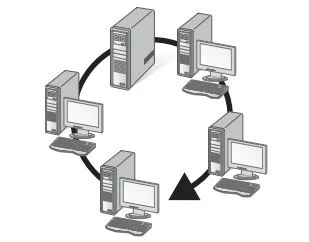what is network topology
Network Topology and Interconnection
Network topology defines the physical layout of the networking devices. It illustrates the arrangement of the networking devices and their interconnection.
There are various types of network topologies. A network with hybrid topologies is also possible - the network is built using multiple topologies.
Bus Topology:
In a bus topology, a single cable connects all the devices. The single cable is called the bus and is shared by the devices. At each end of the bus, a 50-ohm resistor known as the terminator is installed. Figure shows a network with bus topology.
Ring Topology:
In a ring topology, interconnection of the devices form a ring. Each device is connected to two other distinct devices in a way so that the devices create a circle, as shown in Figure. Data circulate in one direction in a ring network. Each device, after receiving a packet, accepts it if it is the ultimate destination or forwards it to the device. Eventually, the packet reaches the destination.
Start Topology:
In a star topology, all the devices are connected through a central device, for example, a hub or a switch. Each device is connected to the central hub by a separate cable. A break in a cable only affects the device connected to it. Figure shows a typical star topology network with a hub as a central device.
Mesh Topology:
In a complete mesh network, every device has a separate connection to every other device. Figure shows a network of mesh topology.





0 মন্তব্য(গুলি):
একটি মন্তব্য পোস্ট করুন
Comment below if you have any questions